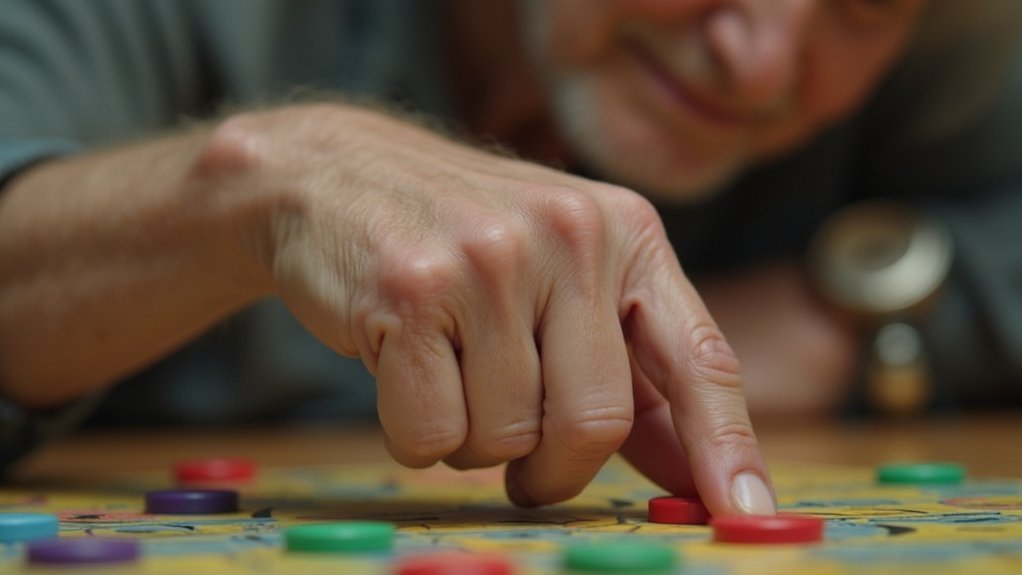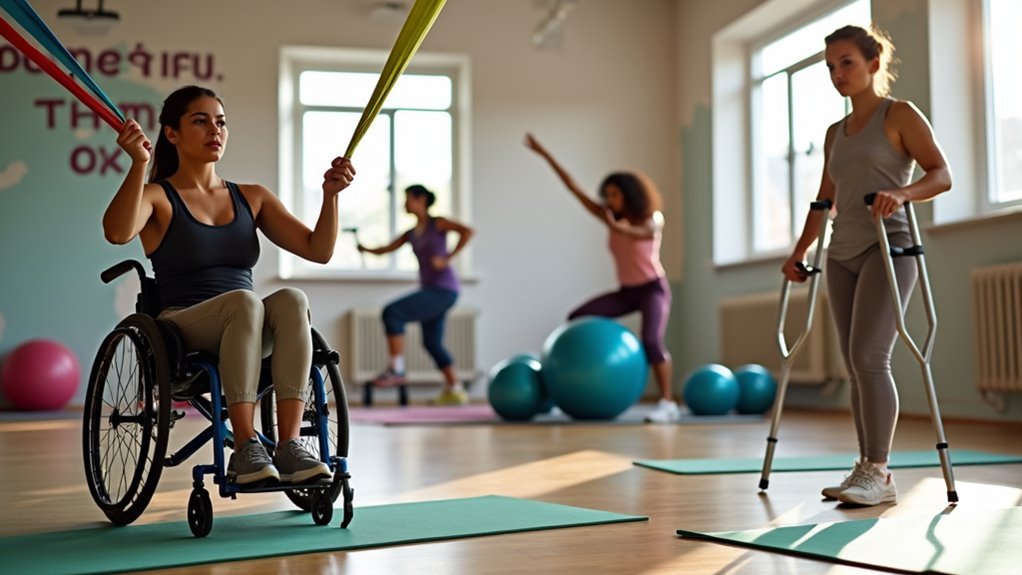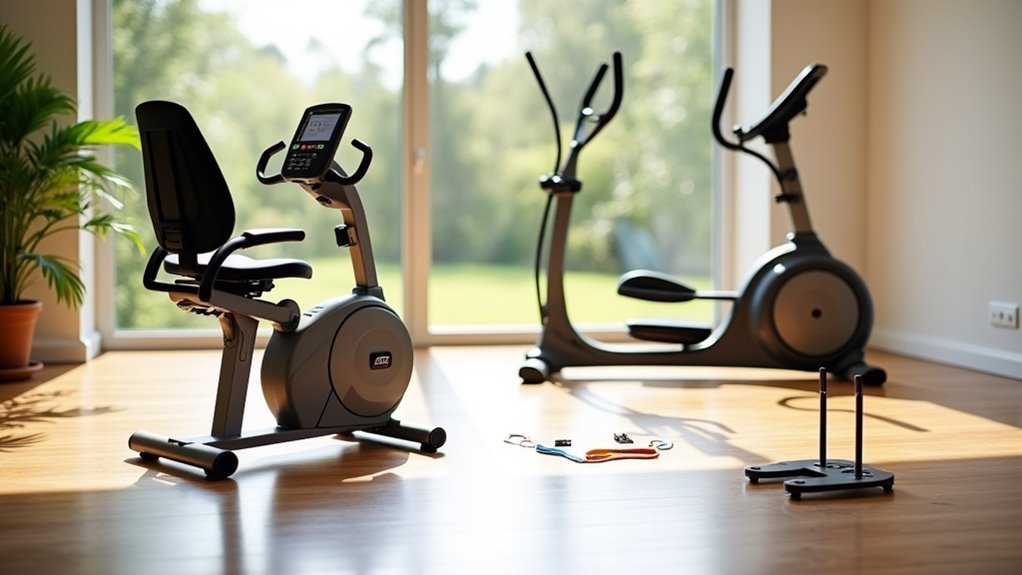Your reflexes slow with age due to both physical and neurological changes. You’ll experience myelin breakdown that slows nerve signal transmission, reduced sensory neurons requiring stronger stimulation, and diminished motor neuron function. Your cognitive processing speed also declines after age 60, making complex reflexes more challenging. These changes greatly impact daily activities like driving and walking, increasing fall risks. Fortunately, specific exercise programs and cognitive training can help maintain your neural responsiveness as you age.
The Neuroscience Behind Age-Related Reflex Changes

As we age, our nervous system undergoes significant structural and functional changes that directly impact our reflexes.
You’ll notice these changes primarily through the decreased number and sensitivity of your sensory neurons, which now require stronger stimulation to activate reflexes.
The breakdown of myelin—the protective sheath around nerve fibers—significantly slows signal transmission throughout your body.
This deterioration directly reduces cognitive processing speed and communication efficiency between your brain and muscles.
While simple stretch reflexes remain relatively preserved, complex reflexes involving multiple muscle groups show more pronounced slowing.
These changes are further compounded by hormonal shifts, reduced cerebral blood flow, and muscle atrophy.
Together, these factors create a cascading effect on your nervous system, explaining why your reflexes and reaction times naturally decline with aging.
Physical Changes That Delay Response Time in Seniors
While your nervous system undergoes significant changes with age, the physical transformations in your body create equally important barriers to quick responses. These physical changes directly impact your slower reaction times.
| Physical Change | Impact on Reflexes |
|---|---|
| Myelin breakdown | Slows nerve signal transmission |
| Decreased sensory neurons | Requires greater stimulation to activate reflexes |
| Motor neuron reduction | Weakens your body’s response to stimuli |
| Age-related conditions | Arthritis can worsen muscle coordination |
| CNS alterations | Complex reflexes suffer greater delays |
The aging on reflexes is most noticeable during activities requiring coordination. Your body needs more time to process signals and respond appropriately. Simple reflexes may remain relatively intact, while complex movements requiring multiple neurological pathways show more significant delays.
Cognitive Factors Contributing to Slower Reflexes

Beyond physical changes, your brain’s cognitive processing plays a fundamental role in your slower reflexes as you age. While your processing speed remains relatively stable until around age 60, you’ll gradually find complex decisions requiring more time as cognitive decline sets in.
Your brain’s ability to quickly interpret sensory information diminishes, directly affecting how swiftly you react to stimuli. Though simple reflexes remain mostly intact, complicated reflexes demanding precise timing and muscle coordination become particularly challenging.
You’ll notice slower reaction times especially when facing complex situations that require rapid decision-making. This isn’t merely due to physical limitations – your increased caution combined with changes in memory and attention contribute greatly to this slowdown, particularly when situations demand quick, coordinated responses.
How Slowed Reflexes Impact Daily Activities and Safety
Your slowed reflexes have profound implications for everyday life as you age. Older adults with slower reactions face increased fall risks, which can lead to serious injuries requiring hospitalization. Daily activities like driving become more hazardous as you take longer to respond to sudden traffic changes.
| Activity | Safety Impact |
|---|---|
| Driving | Higher accident risk due to delayed response |
| Stair climbing | Greater fall danger from balance issues |
| Walking on uneven surfaces | Increased trip hazards |
| Emergency situations | Delayed reaction to unexpected dangers |
Physical therapy can help mitigate these risks by improving your coordination and reaction time. The combination of cognitive decline and diminished reflexes creates a compounding effect, making complex tasks particularly challenging. Maintaining an active lifestyle with targeted exercises is essential for preserving your independence and managing daily activities safely.
Rehabilitation Strategies to Maintain Neural Responsiveness

Although neural pathways naturally slow with age, targeted rehabilitation strategies can effectively maintain and even enhance your reflexive responses.
Regular balance, strength, and flexibility exercises greatly improve neural responsiveness while reducing fall risks. Studies show these physical and mental exercises directly impact reflexes and reaction times.
You’ll benefit from interactive technology like Nintendo Wii games that make reflex training enjoyable while improving coordination.
Incorporate cognitive activities such as puzzles and memory games to stimulate brain function and processing speed.
Don’t overlook environmental modifications—declutter your living spaces to create safer surroundings that support quicker responses.
Stay proactive by scheduling regular vision check-ups and medication reviews, as these factors greatly affect reflexes.
Staying active through multiple approaches guarantees you’ll maintain ideal neural responsiveness despite advancing age.
Frequently Asked Questions
Why Do Older People Have Slower Reflexes?
Your reflexes slow because you’re losing sensory neurons, experiencing myelin breakdown, facing cognitive decline, dealing with reduced muscle strength, and struggling with complex neural pathways that manage coordination and balance as you age.
What Do Slow Reflexes Indicate?
In you, slow reflexes can indicate nervous system changes, including myelin deterioration and decreased sensory neuron sensitivity. They’re also linked to cognitive decline, reduced muscle strength, and coordination issues that impact your daily functioning.
At What Age Do Your Reflexes Start to Decline?
Your reflexes begin to decline after age 20, though you won’t notice significant changes until your 60s or 70s. The decline accelerates after 60 when cognitive processing speed also starts diminishing.
What Does a Slow Reaction Time Indicate?
Your slow reaction time indicates declining neural processing speed, potentially showing age-related cognitive changes or health issues. It’s affecting your ability to respond quickly to stimuli, which can increase your accident risk.
In Summary
While your reflexes naturally slow with age, you don’t have to accept dramatic decline as inevitable. By understanding the neurological, physical, and cognitive factors involved, you can take proactive steps—regular exercise, brain-stimulating activities, and proper nutrition—to maintain your responsiveness. Small adjustments to your environment and consistent rehabilitation efforts will help preserve your independence and safety despite these age-related changes.





Leave a Reply